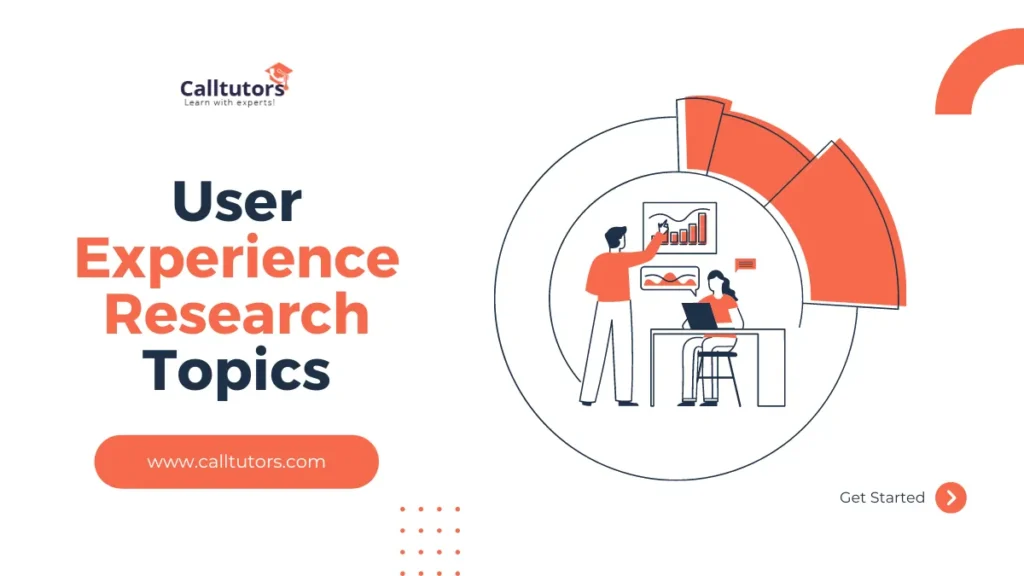Knowing how people use and feel about things is crucial for user experience (UX) research. As technology changes rapidly, examining new and interesting UX research topics becomes even more important.
This guide lists 21 fascinating UX research topics that will excite you, make you think in new ways, and help you develop creative ideas.
Suppose you are an experienced UX expert, a researcher, or a student who wants to learn more. In that case, these topics let you explore untouched areas, find valuable information, and make a real difference in the cool world of user experience.
Get ready for a thought-provoking journey that will grow your knowledge and allow you to create awesome user experiences that people will truly love.
Understanding User Experience Research
Table of Contents
User experience (UX) research helps us learn how people use products, services, or systems. It allows us to see things from the user’s point of view.
Definition and Scope
UX research studies target users’ behaviors, needs, motivations, and problems. It looks at the full experience of getting, using, and getting support for a particular product or service. The goal is to find insights to improve the overall user experience.
Goals and Objectives
The main goals of UX research are:
- Understand what users need and want to achieve, how they think, and what tasks they do
- Find usability issues and areas to improve
- Check if design ideas and concepts work for real users
- Learn about user preferences and how they behave
- Build understanding and empathy for the user’s perspective
By researching UX, teams can design user-friendly products that provide value and make users happy. Research ensures solutions truly meet users’ needs instead of making guesses.
Recommended Readings: “111 Innovative Problem-Solving Research Topics | Amazing Guide!“.
Key Components of User Experience Research
User experience research has several important parts. These help us truly understand our users and what they need.
User Personas
Personas are make-believe people who represent different user groups. They have names, pictures, behaviors, goals, and problems based on real user information. Personas make it easier to consider other users’ needs.
Usability Testing
Usability testing involves watching real users try to use a product or service. This allows us to find issues, see what works well, and get feedback directly from users, which helps improve designs before launching.
User Journey Mapping
A user journey map shows all the steps a user takes to achieve a goal with a product. It covers their thoughts, feelings, problems, and interactions at each step, giving a big-picture view of the full experience.
Surveys and Interviews
Surveys and interviews allow us to ask users questions directly. We can learn about their likes, dislikes, thoughts, and behavior related to a product or topic. This gives us insights straight from users.
These parts allow UX teams to gather much user information and make design decisions based on evidence that provides a great user experience.
Top 21 Most Important User Experience Research Topics
Here is the list of the top 21 most important user experience research topics, let’s look.
1. User Research Methods
This helps to acquire useful information for design decisions. It involves techniques like interviews, usability tests, surveys, card sorting, and contextual inquiries that can be employed to extract users’ needs, behaviors, pain points, and preferences.
2. User Personas
These fictitious characters are created using actual research data. They enable designers and stakeholders to appreciate and empathize with target users, influencing designs toward specific goals.
3. User Journeys and User Flows
These assist in recognizing problem areas. They entail the steps and touchpoints involved when a user wants to accomplish a task or attain a goal within a service or product.
4. Information Architecture
Information architecture involves arranging and logically designing its structure, content, features, and navigation. Effective information architecture helps users find what they are looking for and accomplish tasks quickly.
5. Interaction Design
The formation of interactions among users and digital artifacts is laid down by the affordances of media feedback provided and the mapping techniques of nature. This makes the interactions intuitive for the users, along with efficient execution, which leads to good user experiences.
6. Usability Testing
Assessing how easy a product is to use by watching representative users interact with it within a controlled environment. It helps identify usability issues, verify design assumptions, and gather iterative feedback for continuous improvements.
7. Accessibility
Accessibility is about creating products and services that can be seen, manipulated, decoded, and possessed by people with disabilities, who, like other users, become equal in chance to the rest of the people regardless of their ability.
8. Mobile UX
Mobile UX means providing better experiences for mobile devices that consider small screens, touch interactions, and context, such as on-the-go or limited attention. It ensures that mobile products are easy to use and meet user requirements.
9. Cross-Channel Experiences
Cross-Channel Experiences refer to a consistent experience across different platforms and touchpoints (e.g., desktops, mobile phones, wearables) when switching between devices and channels.
10. Design Systems
Reusing components, patterns, and guidelines guarantees consistency and effectiveness in application design and development. This ensures that all products and platforms look similar.
11. Data-Driven Design
Relying on analytics, user data, and other quantitative approaches for informing design choices while demonstrating them instead of intuition or personal preferences. This is to create experiences that match users’ needs and actions.
12. Emotional Design
Considering the emotional impact of design decisions on users’ feelings, attitudes, and overall experiences. To do this, principles of psychology and human-centered design are applied to invoke certain emotions.
13. The Design of Persuasion
Affecting User Behavior and Decision-making through Principles of Design and Psychological Keys. It can be utilized to prompt preferred reactions, like making a purchase or adopting a healthier action, but it should be done ethically.
14. Gamification
Including game aspects and mechanisms (e.g., points, badges, leaderboards) in non-game contexts increases user engagement, motivation, and enjoyment. This technique is especially effective in education, fitness, and productivity.
15. Virtual and Augmented Reality
Devising virtual and augmented immersive experiences about concerns such as spatial awareness, gesture-based interfaces, and blending digital with the physical world.
16. Voice User Interfaces
Design for conversation and talk-based interaction, incorporating natural language processing, speech recognition, and the unique hurdles and opportunities in voice-based interfaces.
17. Artificial Intelligence and Machine Learning
Unveiling how AI and ML influence user experiences while creating designs that promote efficient human-AI cooperation. This ranges from intelligent assistants to personalization and adaptive interfaces.
18. Design Ethics
Exploring ethical implications of design choices, emphasizing users’ privacy, trust, and welfare. Points include data privacy, algorithmic bias, and responsible persuasive design methods.
19. Inclusive Design
Inclusive Design is about making sure that products and services are accessible and usable by diverse users with different abilities, backgrounds, and desires to make sure everyone has an equal chance in life.
20. Design Thinking
Design thinking involves a human-centered approach that involves several steps, such as empathizing with the user, ideation, prototyping, and testing. This approach effectively leads to innovative solutions that address user needs and pain points.
21. UX Research Methodologies
UX Research Methodologies are all about seeking new and emerging techniques that facilitate gathering customer insights for design validation purposes and staying ahead in this fast-changing field of user experience research.
These research topics cover a wide range, looking into every possible UX-related topic and yielding important information.
Closing Up
Keeping up with the latest topics in user experience research is super important for creating products and services that truly give users what they need and make them happy to use.
The 21 topics we discussed, from learning about users to designing for voices and considering ethics, are some of the most interesting and relevant areas in the constantly changing field of UX.
By exploring these topics, UX professionals can better understand their users, design smoother and more enjoyable interactions, and stay ahead of what’s new.
A strong focus on user experience research helps businesses create innovative solutions that click with their audiences, build customer loyalty, and drive success in today’s competitive digital world.
So whether you’re an experienced UX pro or just getting started, prioritize these compelling research topics and keep expanding your knowledge and skills.
FAQs
How can user experience research benefit my business?
User experience research helps businesses better understand their customers, leading to improved products, increased customer satisfaction, and higher retention rates.
What are some common challenges in conducting user experience research?
Challenges may include recruiting diverse user participants, ensuring unbiased data collection, and interpreting qualitative insights effectively.
Is user experience research only relevant for digital products?
No, user experience research can be applied to a wide range of products and services, including physical products, websites, mobile apps, and software platforms.



